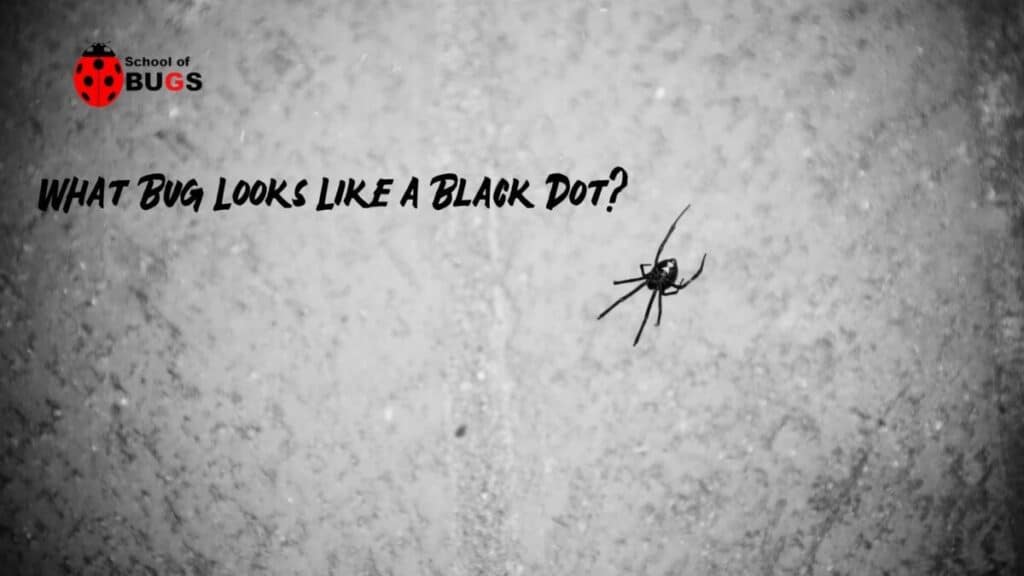
With 900,000 different species of insects on earth, it comes as no surprise that many insect species look so similar that they can be mistaken for different bugs altogether.
The key to identifying different insects is to know what to look for. The following 10 insects look like black dots, and can be difficult to differentiate from one another:
- Carpet Beetles
- Minute Pirate Bugs
- Mites
- Gnats
- Biting Midges (No-See-Ums)
- Black Carpenter Bees
- Black Widow Spiders
- Bedbugs
The rest of this article will break down the details of each of these insects and whether you should worry if you ever encounter them.
Carpet Beetles
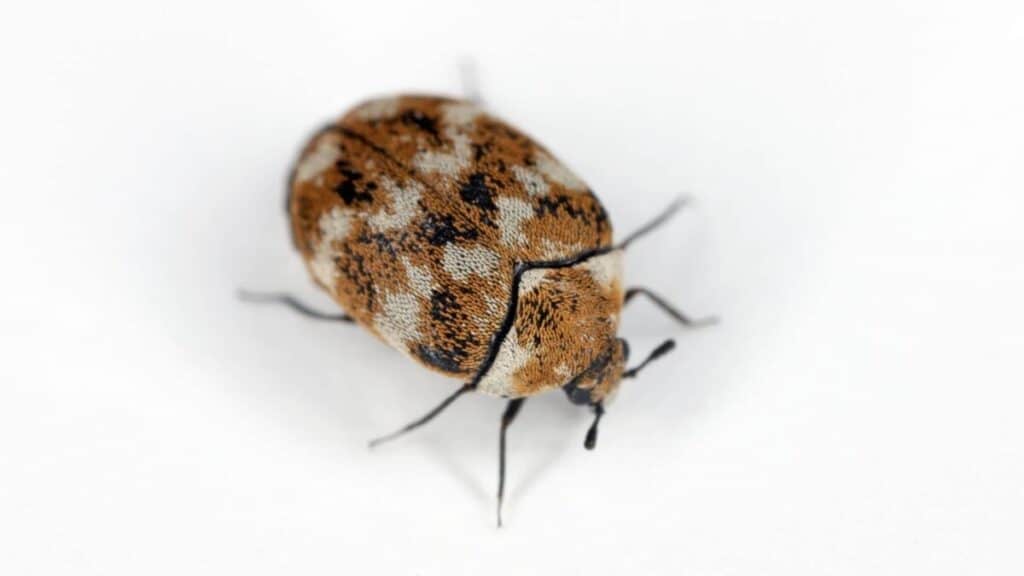
There are three kinds of carpet beetles commonly found inside homes, all of which sport a minute, round, dark body with minor variations.
- Varied carpet beetle (Anthrenus verbasci) – attracted to wool, animal fur/skin, leather, silk, dried plants, and any other natural material upon which hatched larvae can feed. Can often be found near windows. Their body is round, with alternating light and dark brown stripes on their backs.
- Furniture carpet beetle (Anthrenus flavipes) – the largest of the three carpet beetle varieties, the furniture carpet beetle has the most varied color on its body. The University of California details their bodies as having a mottled appearance, with light brown, yellow, and dark brown as the main colors. However, these scales can quickly wear off, exposing the plain black or dark brown scales beneath.
- Black carpet beetle (Attagenus unicolor) – Like its name suggests, the black carpet beetle is black or dark brown in color, and is the smallest of the three varieties of carpet beetle.
Carpet beetles are not harmful to humans, but they can infest furniture and home goods made from natural materials.
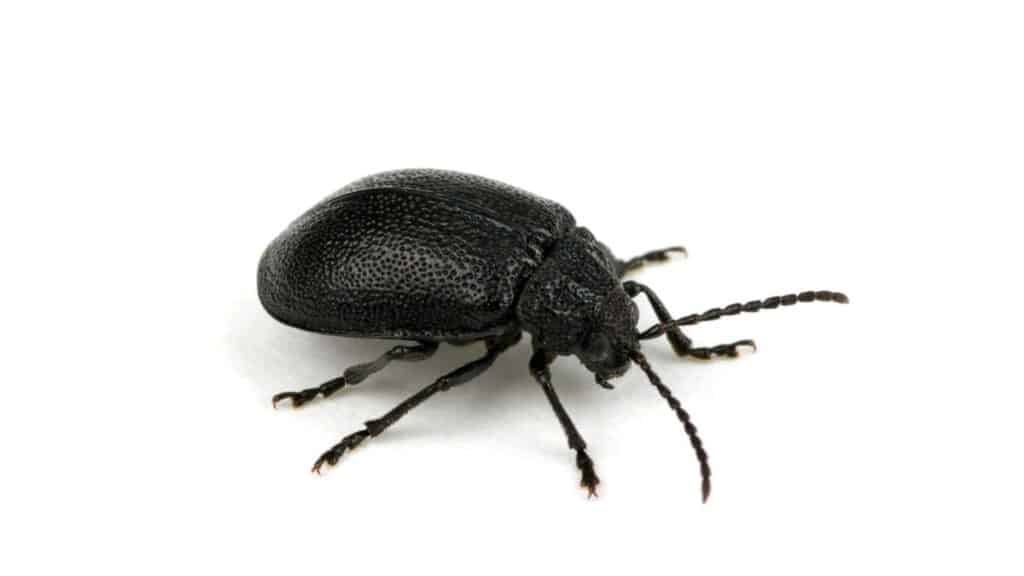
The felts and hammers inside pianos have been reported as common infestation grounds for carpet beetles, with the damage affecting the sound of the intrument.
If you encounter a carpet beetle and it looks like a black dot, it can be either of the three varieties.
However, if you’re seeing it at a close distance and it still appears as uniformly black (or dark brown), it’s most likely the third variety: the black carpet beetle.
Minute Pirate Bugs (a.k.a. Insidious Flower Bugs)
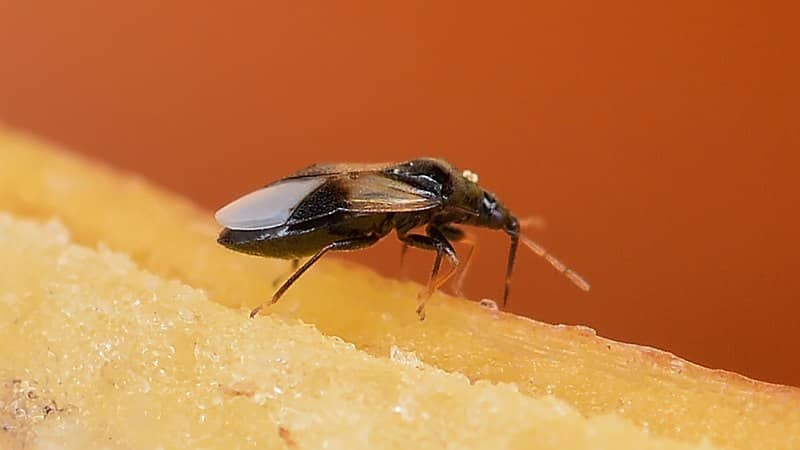
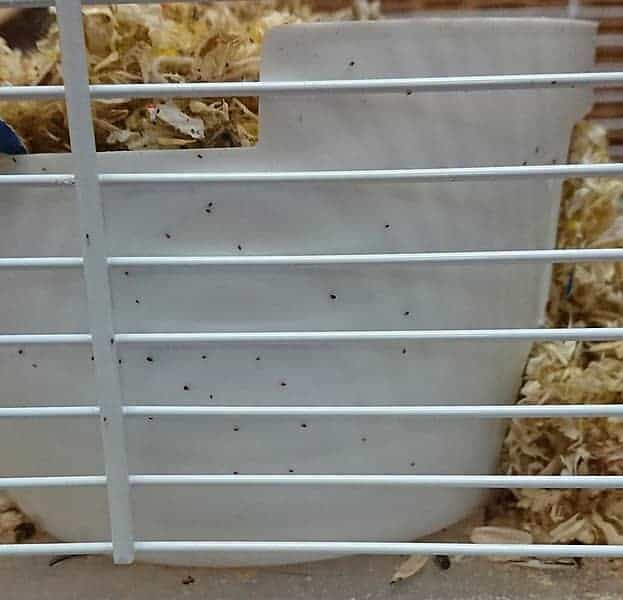
According to Texas A; M, there are various kinds of mites, but only a few bite humans. Most mites are harmless and live outside, feeding on decaying vegetation.
Others may spoil food stores by feeding on cheese and grain. The peskiest mites that are most commonly found in human homes are as follows:
- Tropical rat mite (Ornithonyssus bacoti) – the most common mite found in human homes
- Tropical fowl mite (Ornithonyssus bursa) – found in homes, also on wild and domestic birds
- Northern fowl mite (Ornithonyssus sylviarum) – found in homes; also on wild and domestic birds
- House mouse mite (Liponyssoides sanguineus) – found in homes with mice problems
Since these four mite species are small, about the size of a period at the end of a sentence, experts advise the best way to identify them is to search for all possible bird or rodent sources in or near a home.
Rat mites, for example, might invade a home because there is a rat’s nest in the attic.
While the tropical rat mite is parasitic, causing harm to rats, neither it nor any of the other mite species listed above are parasitic to humans. They readily bite, however, and some can even cause a mild rash.
Gnats
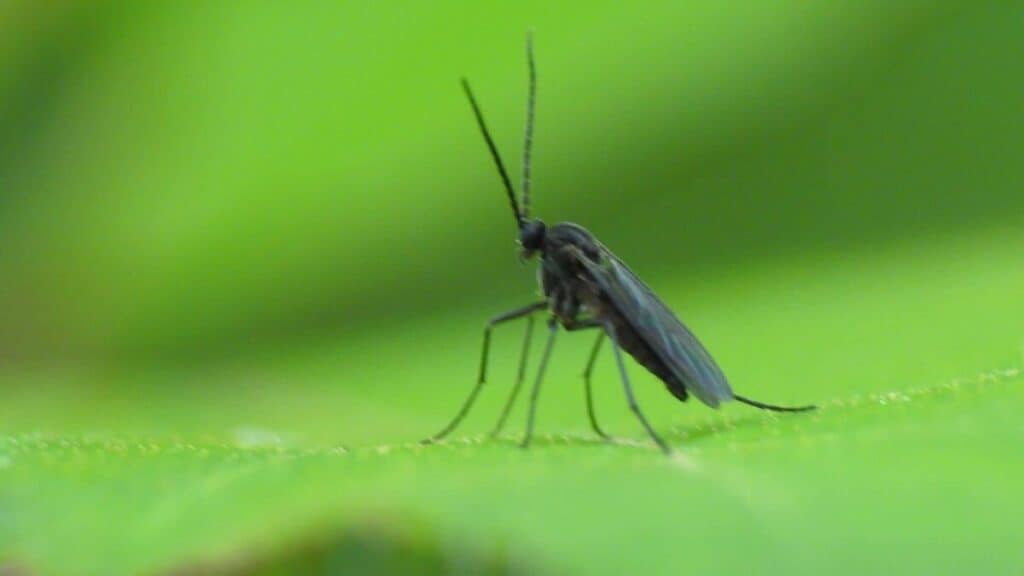
One of the smallest insects on our list, full-grown gnats don’t usually exceed more than a couple millimeters in length and range from gray to black in color.
Being weak fliers, gnats are most noticeable when they fly in groups. You’ve probably spotted a group of gnats lingering in a swarm outside during dusk.
These are male gnats clustered in a mating group, according to Holder’s Pest Solutions.
While most often encountered in groups, gnats also fly solo. Female gnats are drawn to moist soil and stagnant water, as these are ideal locations to lay their eggs.
Gnats don’t pose any danger to humans, though they can be quite annoying when you walk through a swarm of them outside in the summertime.
However, they can pose a threat to your indoor houseplants, as gnat larvae burrow into the roots and stems.
Biting Midges (No-See-Ums)
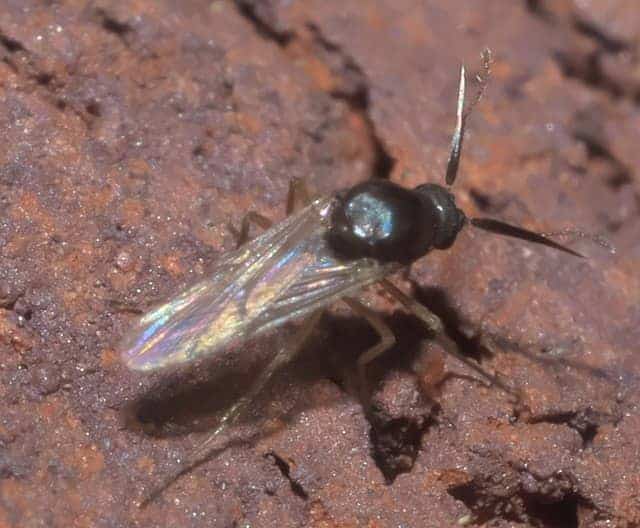
Biting midges, also known colloquially as “No-See-Ums,” are the smallest insect on our list. Like gnats, biting midges are mainly outdoor pests that gather in swarms near early morning and dusk, especially near marshes and swamps.
Unlike gnats, however, biting midges have a painful bite due to their sharp teeth and powerful mandibles.
While the extent of damage to humans by the biting midge varities in the United States is a mild allergic reaction, this isn’t the case for the rest of the world.
The Entomology Department at the University of Florida warns of parasitic filarial worms carried by biting midge varities in Central and South America, the Caribbean, and Africa.
These filarial worms burrow into human skin, causing skin legions and infection.
While the biting midges in the US cause little to no threat to humans, the University of Florida points out that the insects are the primary carrier of the bluetongue virus in sheep and cattle, which causes severe illness and even livestock death.
While the name is fairly self-explanatory, biting midges are still relatively visible to the naked eye and appear as a miniscule black or grayish dot.
Black Carpenter Bees
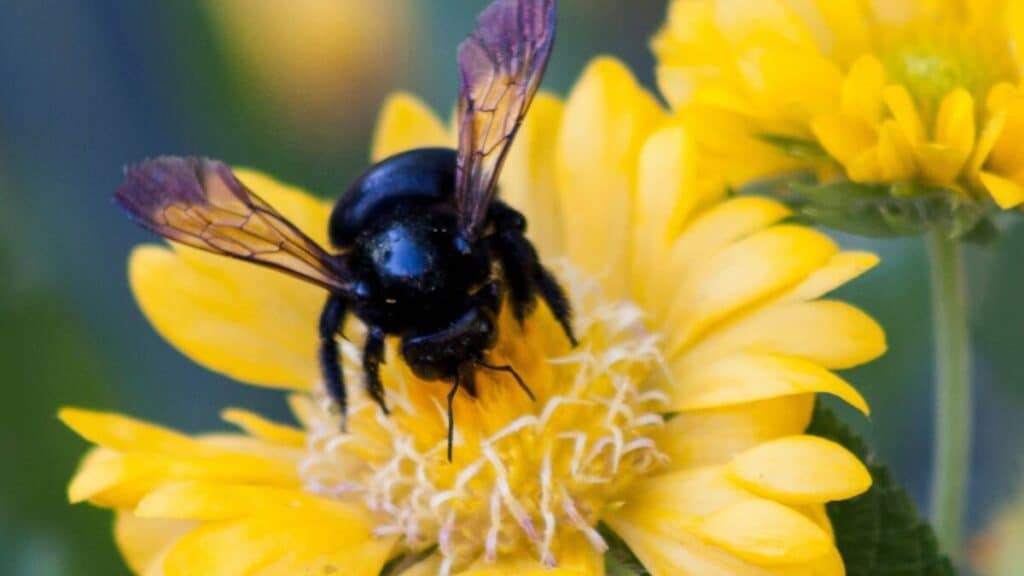
One of the largest insects on our list, black carpenter bees are pollinators just like their yellow and black striped cousins. But there are some distinct differences.
As their name suggests, black carpenter bees are drawn to wood, often burrowing into a beam or fence post to build their nests.
According to the United States Forest Service, this can cause structural damage to homes and buildings.
Unlike their striped cousins, carpenter bees don’t live in a hive centered around a single queen, nor do they have a caste system; their nests are made up of individual males and females with their immature offspring. They are seldom found inside homes.
Their name is somewhat misleading: only female carpenter bees are fully black, as the males are golden in color with green eyes. If you encounter one of these bees and it looks like a black dot, it is female.
Black Widow Spiders
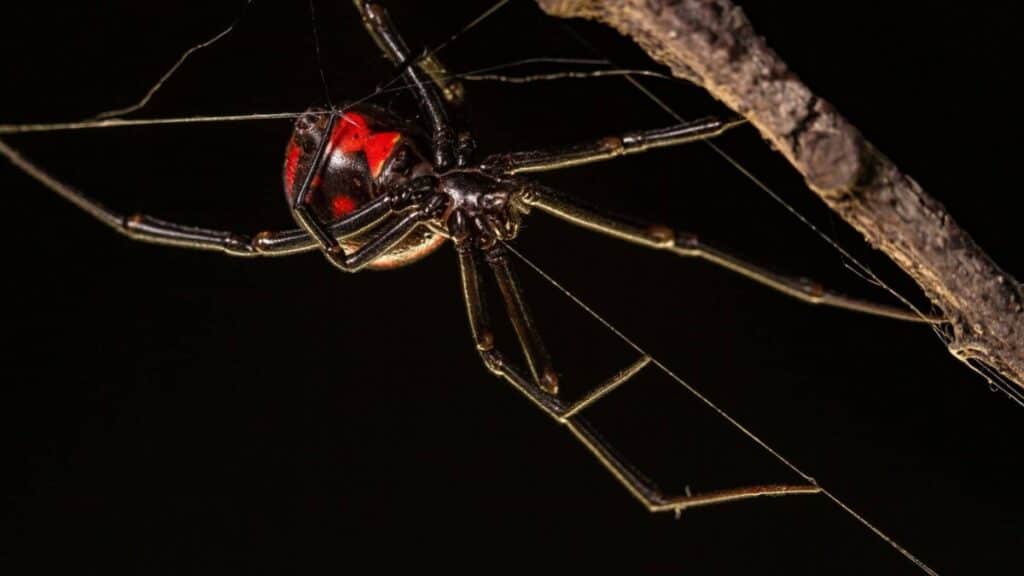
A notorious arachnid, the black widow spider is the species on our list that causes the most direct harm to humans.
According to National Geographic, the black widow spider’s venom is about 15 times more potent than that of a rattlesnake. But because so little venom is injected during a bite, it’s seldom deadly to humans.
Black widow spiders are one of the larger species on our list, with adult females measuring longer than a standard paper clip.
They are fully black, save for the red hourglass pattern on the underside of their abdomens.
According to the Nature Conservancy of Canada, the only exception is newly hatched black widow spiders, which are all white.
Despite the painful effects of a black widow spider bite (which include muscle contractions, nausea, and difficulty breathing), few healthy adults are killed by the arachnid.
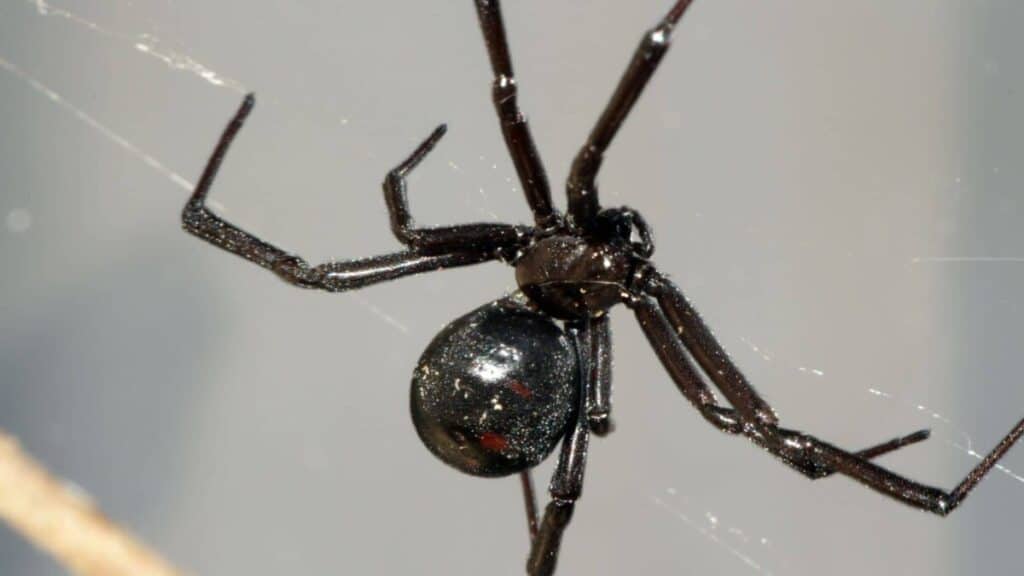
However, their venom has proven to be deadly in young children, those with chronic illness, and the elderly.
The spiders are solitary (except for during mating season) and prefer to spin their large webs in undisturbed areas. They aren’t considered aggressive and only bite in self-defense.
If you see a black spider, with a round, smooth abdomen, you might be looking at a black widow spider from above.
The only way you’ll be certain is if you identify the red hourglass shape on its underside. And while the venom isn’t generally fatal to healthy adults, it’s best to steer clear of the black widow spider.
Bedbugs
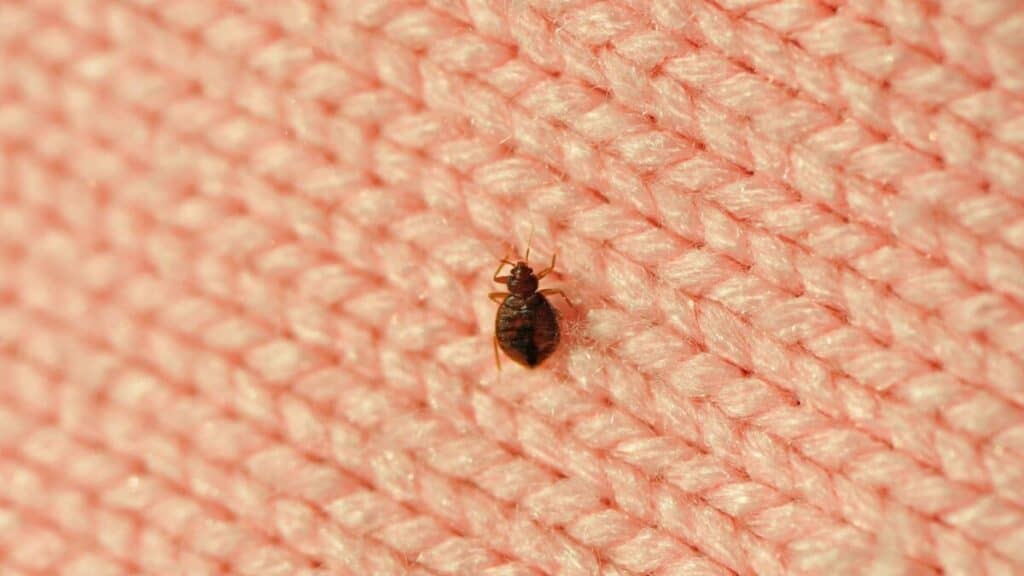
As their name suggests, bedbugs are typically found in and around beds, burrowing into mattresses, box springs, pillows, headboards, and bedding.
They move from place to place by hiding in furniture, clothing, luggage, and bedding and can be difficult to get rid of.
Contrary to popular belief, bedbugs aren’t particularly drawn to dirty environments. According to Mayo Clinic, all they need is a warm environment and a place to hide.
However, certain environments can be more susceptible to bedbug infestation, such as:
- Apartment buildings
- Dorm rooms
- Hotels
- Shelters (homeless, refugee)
- Trains, buses, and cruise ships
While typically reddish-brown in color with a round body, they can be darker and appear as dark brown or black dots.
Alright, that’s it for this article, here are a few hand-selected articles that you might also find interesting reads:
What Are Those Tiny Black Bugs in the House That Bite?How Do I Get Rid of Little Black Bugs in My House? 3 Easy Steps
5 Most Common Tiny Black Bugs in Kitchen Sink – Identified
Recent Posts
Tiny Black Bugs in Bathroom NO WINGS: What They Are and What to Do!
Finding tiny black bugs in your bathroom can be uncomfortable, to say the least. Especially if they are persistent, or they appear in very large numbers, which they often like to do. When it...
Tiny Black Bugs in Plant Soil - What Are They & What To Do About It
A short horror story: You get a new houseplant. You do your best to take care of it. You’ve ensured that it has the right soil, the right amount of sun, it gets enough water. And then one day, you...

